Superflux: the duo inspiring change at Venice Biennale through hypothetical worlds
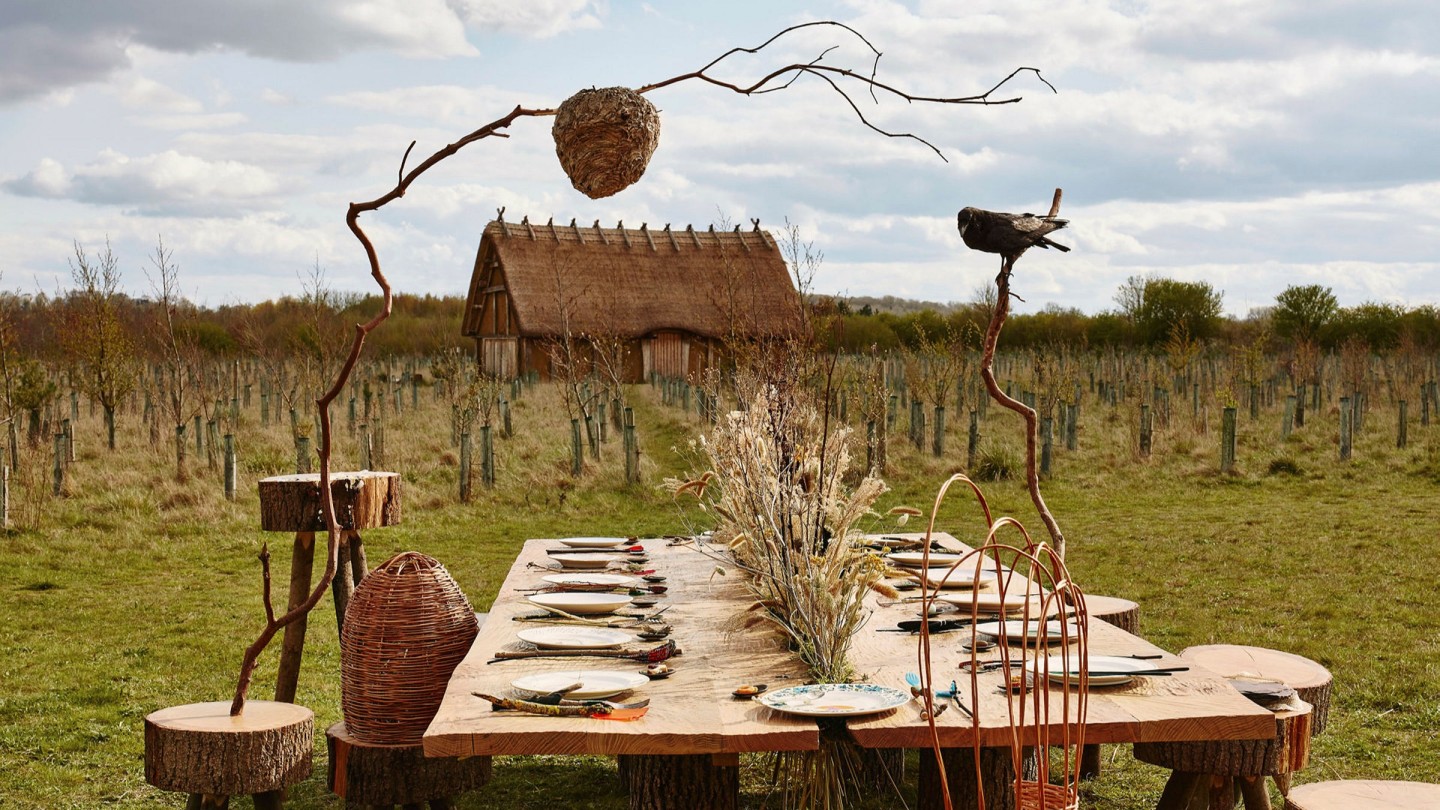
Roula Khalaf, Editor of the FT, selects her favourite stories in this weekly newsletter.
On a majestic oak table at the end of the world, a dinner for 14 is set. It’s an artful but rustic affair, with tree trunk sections for stools, hand-painted china plates, and cutlery hewn together out of repurposed vinyl records, zip-ties and twigs. The guests are equally diverse, and only three (male, female and child) are human. A raven is seated on a high perch next to a mushroom; a rat has a wasp and a fox as neighbours. Each setting at the table has been carefully tailored to fit its occupant — a walnut on a slice of bread for one, a chunk of tasty wood for another.
Entitled “Refuge for Resurgence”, the installation commissioned as part of this year’s Venice Biennale of Architecture imagines a meeting between different species in a hypothetical future after the current era of human domination. This post-Anthropocene mise-en-scène is the work of Superflux, the London-based design studio founded by Anab Jain and Jon Ardern. A kind of reverse Noah’s Ark, the project will be installed inside the Arsenale building as a “deconstructed home”, the pair say. As part of the piece, a window made from video monitors shows the imagined world outside, a computer-generated view of overgrown, deserted cities. While these various species meet in an organic, convivial way, the physical remnants of our current, extractive human civilisation are a reminder of how the future got there.
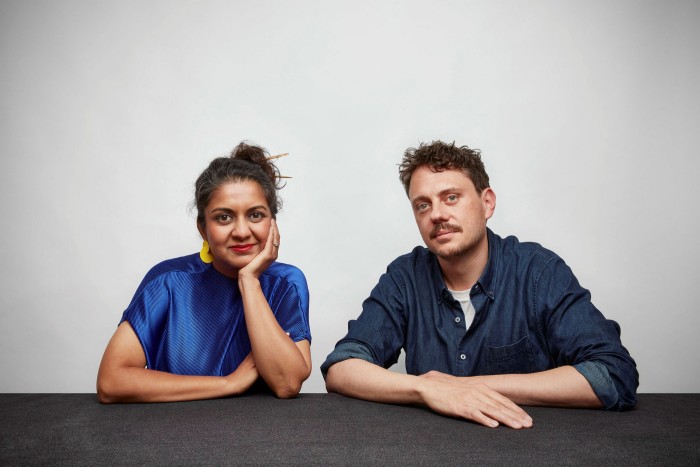
“It’s a folktale kind of project that talks about changing our relationship with nature,” Jain explains, “from seeing it as a resource to be exploited to seeing all species on the planet as co-inhabitants with whom we are deeply interconnected ecologically, emotionally, even economically.”
Superflux are well-versed in dreaming up new ways of seeing the world. For the last decade, the duo have been listening for what they call “murmurs of future potential” to create experiences like videos and installations that invoke hypothetical worlds. What would the world look like, they wonder, if genomic data started affecting health insurance premiums, or if drones took over traffic management and policing? How could artificial intelligence change the way we care for our elders and, more importantly, would it work?
Their speculative works often turn huge, tangled human challenges into tangible design artefacts that the viewer can interact with. These carefully researched prototypes have a powerful emotional appeal, convincing viewers of the necessity of acting in the present to create the future we want to see (the pair sometimes refer to them as “cautionary tales”). It’s an approach that has won them project commissions from a range of institutions, including the V&A, as well as governments and business leaders.
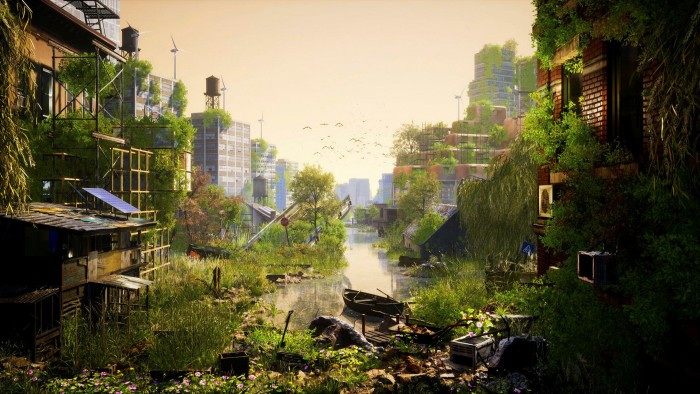
Unsurprisingly, multiple works have looked at the grim environmental forecast for our planet. For a recent iteration of the project “Mitigation of Shock” at CCCB Barcelona, Superflux created a mock-up of a flat in London in 2050, where climate change has created persistent food scarcity. The home was fitted out with a “fogponics” indoor farming system — a technique that grows plants using nutrient fog — and awash with an artificial violet light. It’s an eerie demonstration of the impact of climate change on the everyday life of its inhabitants. Instead of the high-shine, automated world we often see in sci-fi, this is a hacked-together attempt to make do in difficult circumstances. “How people are experiencing these things on an emotional level — these things matter,” says Jain, noting that their scenarios aren’t simply idealised or dystopian. “Our role is to propose things they can recalibrate to.”
Climate change, like many of the topics that Superflux’s projects engage with, is difficult to comprehend in its totality. By allowing visitors to walk around and experience these hypotheses, Jain and Ardern have found a way to inject a personal element into a conversation that could feel debilitatingly complex. “These experiences that are quite visceral,” Ardern says. “[They] stop it from being a line on a graph.”
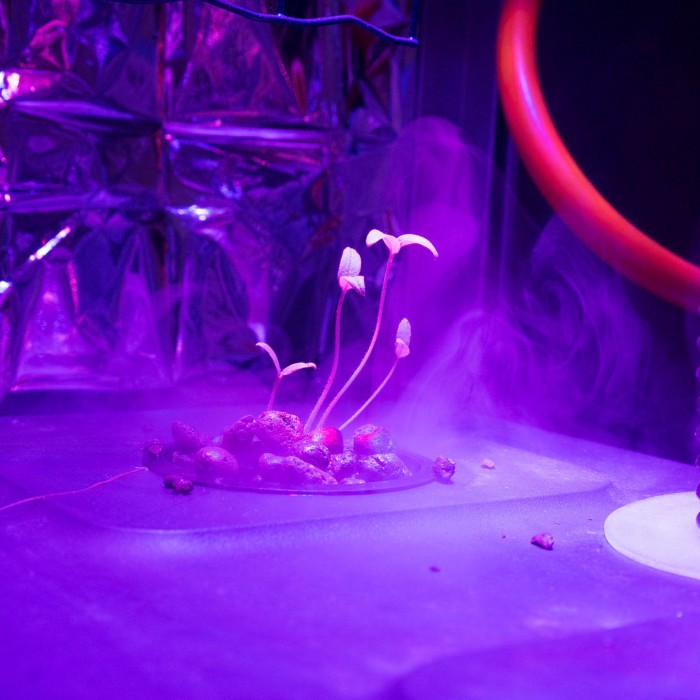
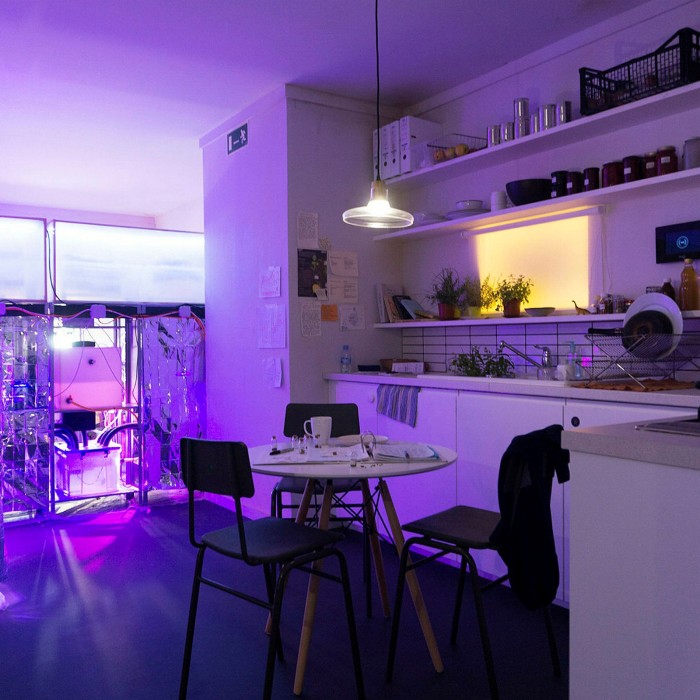
Instead of presenting viewers with a data-laden report, they find their output’s personal and embodied approach can be much more persuasive to decision makers. For example, in the project “The Future Energy Lab”, undertaken for the UAE’s Ministry of Energy, Superflux created an “artefact” from the future: a sample of polluted air from a world where no action was taken to combat climate change. One coughing, spluttering breath of the stuff was enough to convince the sceptics of the scale of change required — more effective than any graph. “If you get your CEO to experience that, it’s proven to make a difference,” Jain says. “Personal experience can be a powerful ally, and can alert you to things that logic and reason miss,” adds Ardern.
While the studio’s work uses data as a foundation, it often conveys its message through the lens of basic human needs. The pair explain that dining alongside animals and fungi, depicted in their Biennale installation, is a chance to see them as equals, citing the influential book Braiding with Sweetgrass by Robin Wall Kimmerer as a model for alternative and inclusive attitudes to nature. Ardern points out that “the table is very symbolic of coming together and sharing”. “It is a hope that we start to see that shift, moving from a human-centred world to a ‘more than human’ perspective,” Jain says. “We believe it starts with care. If we have a sense of care it’s much easier to take action.”
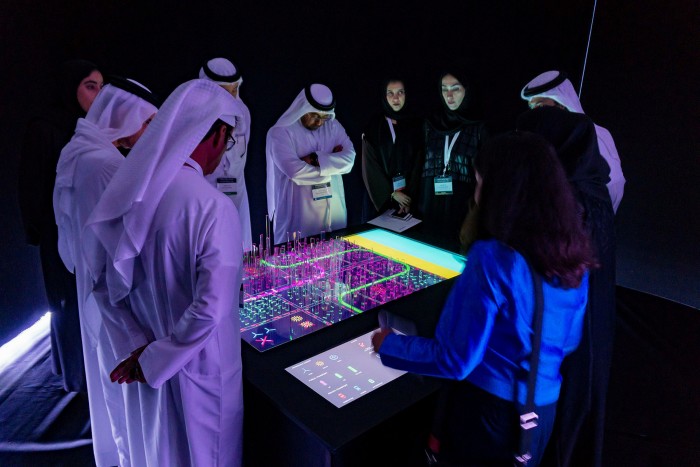
Like their “Mitigation of Shock” project, the earthy, recycled aesthetic of “Refuge for Resurgence” emphasises the importance of getting by with what still remains of our planet’s resources. The table at its centre is made from a naturally-grown oak tree, whose knots and weave gives it an off-kilter feel: “We’re really interested in exploring the materiality of rewilding,” Ardern says. “We have to make do with these remnants of the last hundred years. The table represents that we can make do with what we have,” Jain adds.
Throughout the 12 years they have been running their practice together, Jain and Ardern have emphasised narrative as a way of communicating about the future. And yet today, with the reverberations of the pandemic still echoing around the world, the next few years seem more uncertain than ever. For Superflux, these dark times also reveal something important about the world we live in. “If you look at it with the right eyes, there’s this message: we’re connected with the wider ecology,” Ardern observes. “We could transform the world tomorrow. That possibility is there beneath the surface.” The pair believe that what we need to get there is imagination. As Jain says, “You can put your models out there, and your strategies out there, but really it’s the stories we need.”
‘Refuge for Resurgence’ will be on display at the Venice Biennale of Architecture to November 21, superflux.in
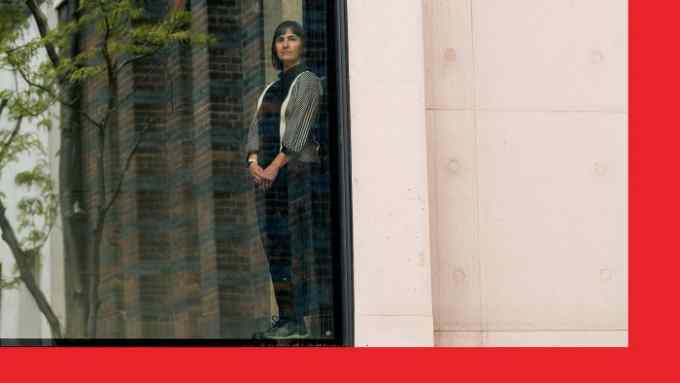
Comments